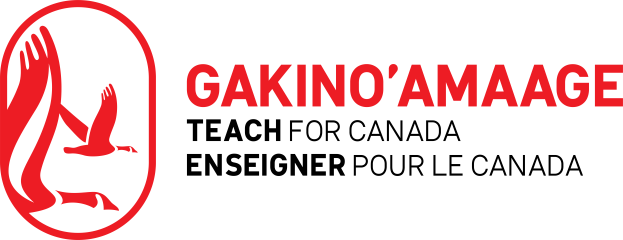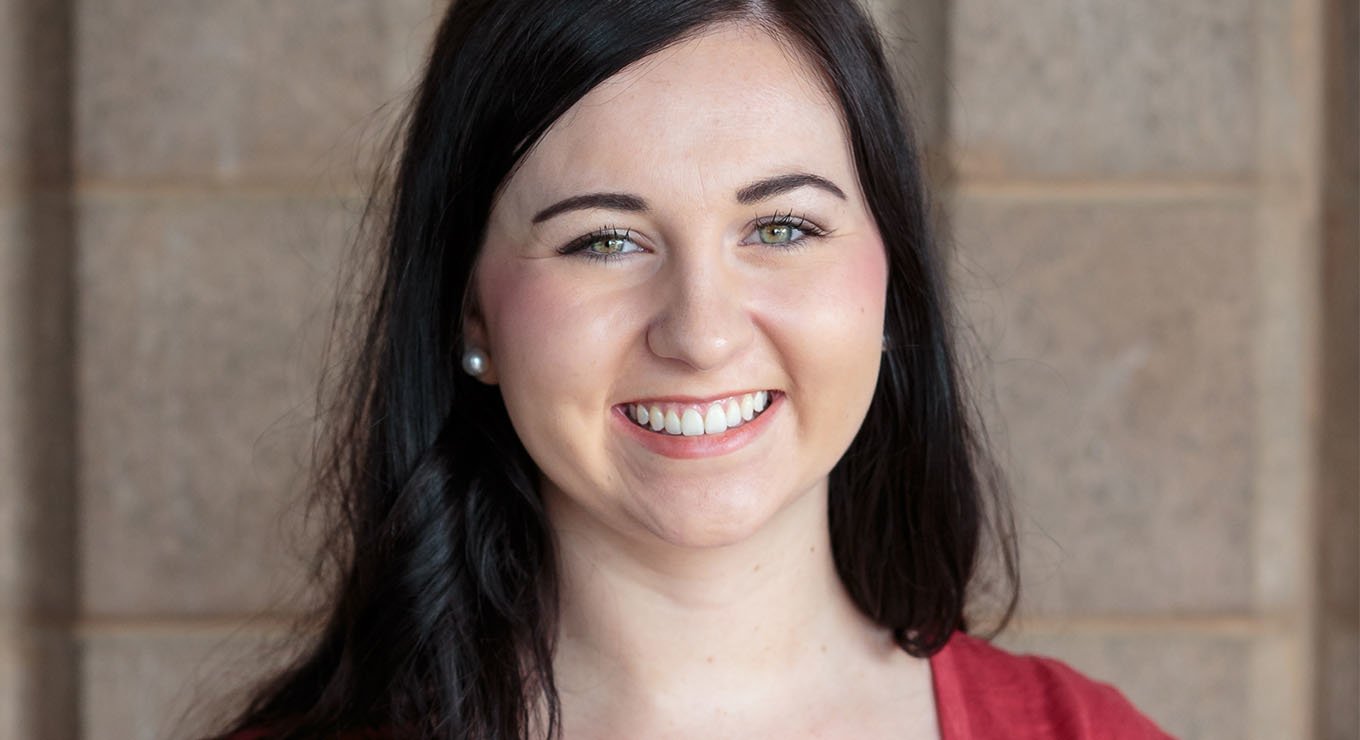Ashley Vandenberg teaches grade 1 in Kejick Bay, Lac Seul First Nation. Before applying to go teach in a northern First Nation through Teach For Canada in 2017, Ashley completed a Bachelor of Education at York University. She is originally from Perth, ON.
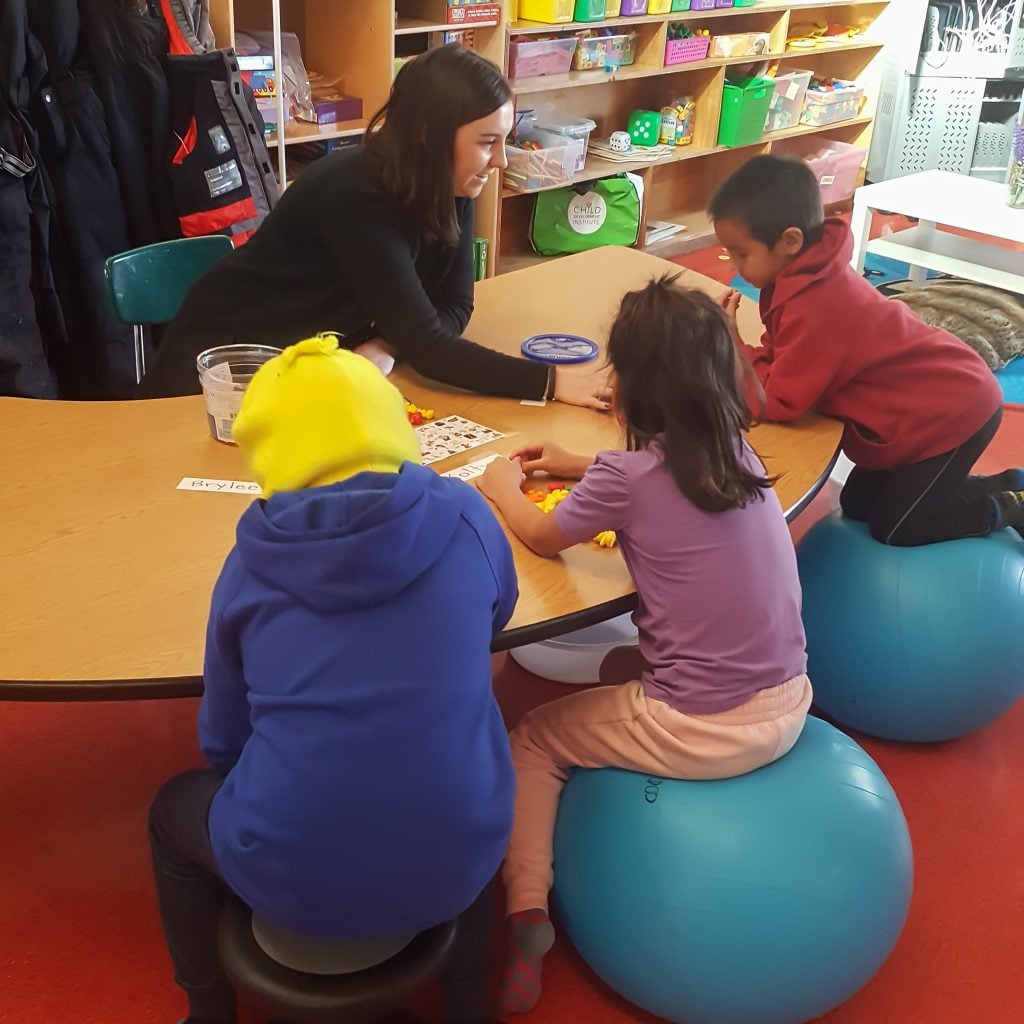
Ashley Vandenberg is exploring flexible seating option with her grade 1 students
In Ashley Vandenberg’s grade 1 classroom in Lac Seul First Nation, you’d be hard pressed to find many conventional chairs. This year, for the first time, Ashley has implemented flexible seating – a hot topic in the education world. Flexible seating classrooms offer alternative seating options that differ from the classic desk and chair. They give students an opportunity to choose where they sit as well as the type of seat they learn best in.
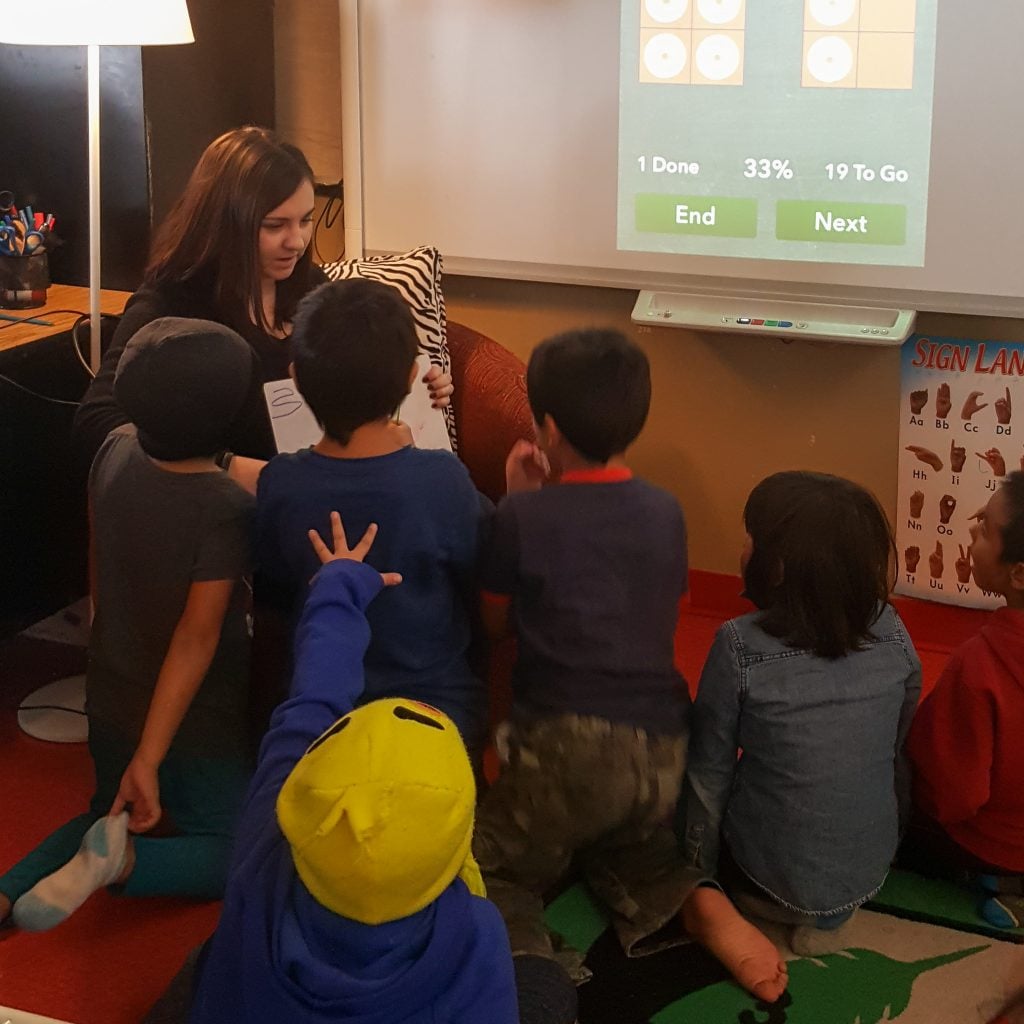
Carpet seating is an option for students, even during independent learning
Why Implement Flexible Seating?
There are many reasons why teachers choose to put in place flexible seating – and many articles that provide more information on the topic. Flexible seating empowers students, increases their comfort level, makes learning fun and engaging, and allows a sensory or physical output for students who need it. “With flexible seating the kids are more engaged when they are working in a seat of their choice. It also meets their kinesthetic needs,” explains Ashley.
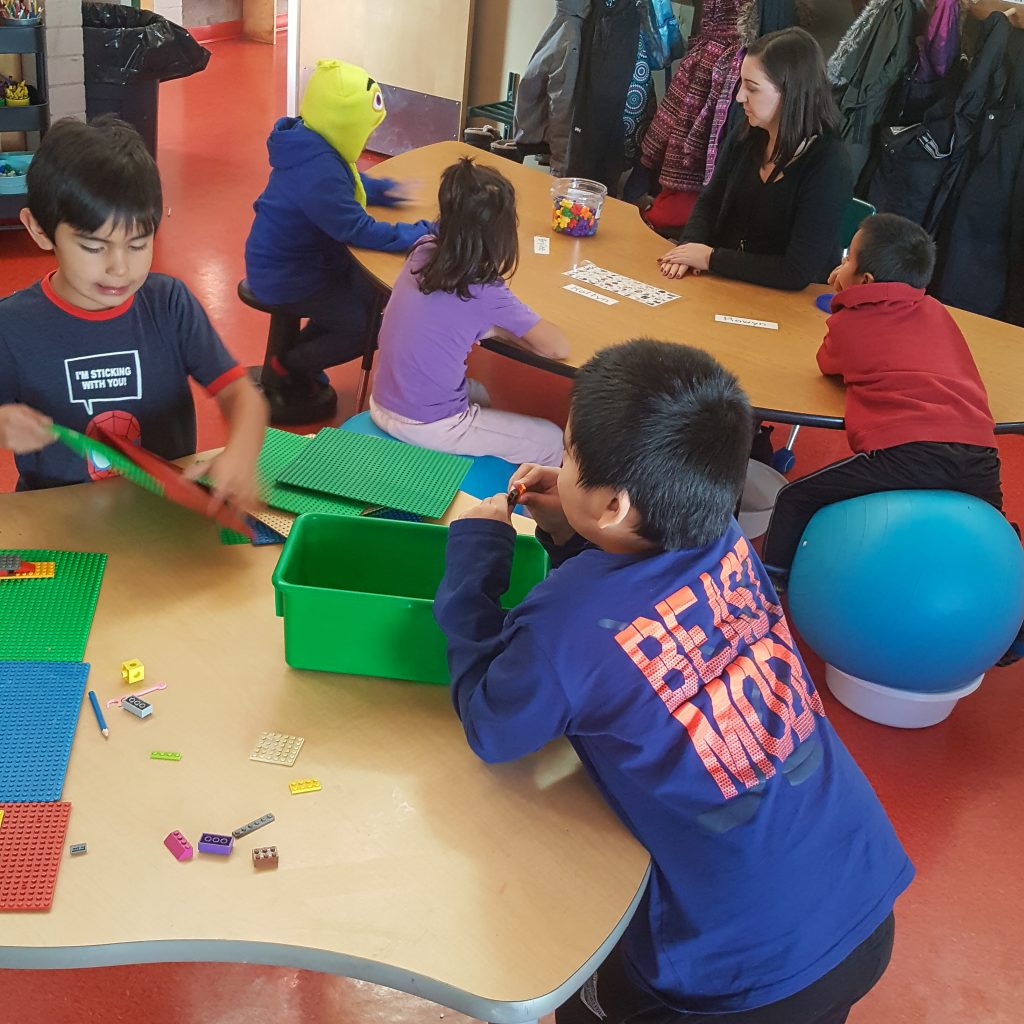
Seating options include standing desks, stability balls, and wobble stools
Many Types of Seating Options
Ashley worked with her school administration, including principal Alisha Hill, to develop a plan on which types of seats to introduce into her class. She purchased most of the items online (via Amazon and IKEA) using her classroom budget. Currently Ashley has:
– Wobble stools
– Stability balls (an exercise ball)
– Bean bag chairs
– Floor cushions
– Lap desks (to support students as they sit or lie on the floor)
– Low desks (that let students sit on the floor)
– High desks (that let students stand)
– Chairs
– Carpet area (with many opportunities for learning during carpet time)
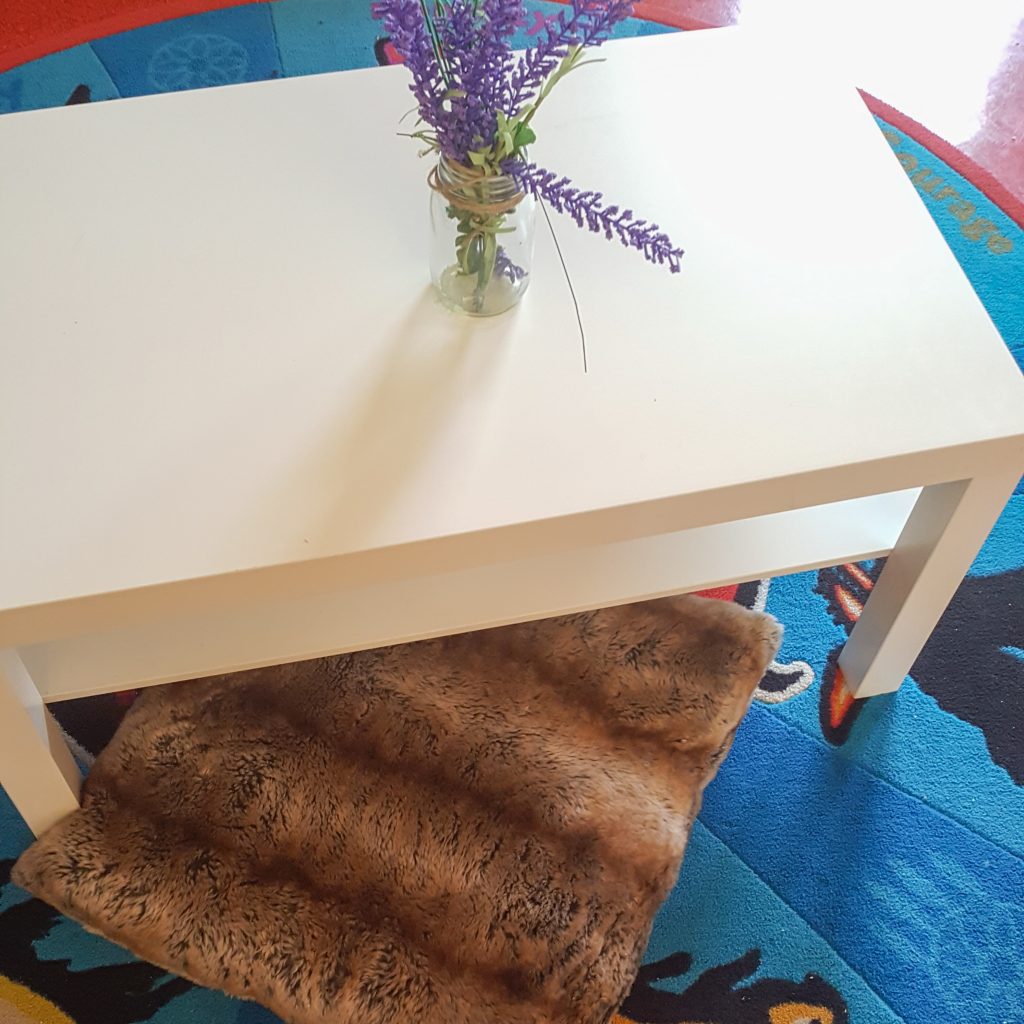
During independent work time students can sit at low tables on a cushion
Introducing the New Flexible Seating
Ashley talks openly about the challenges she faced when introducing flexible seating. Her students were very eager to try out the new types of seats and it was hard to reign in their excitement. “I started with a basic activity. I chose colouring and allowed students to rotate through all the types of seats while doing this basic activity,” says Ashley.
This approach allowed students to focus on what they liked or didn’t like about the seat instead of focusing on the work they were completing.
“This continued for a number of days and eventually I said ‘You can sit where you work best’,” Ashley reports. “Now during independent work time I allow students to take their work to any seat, but remind them that if they are not focused Ms. V gets to pick their seat.”
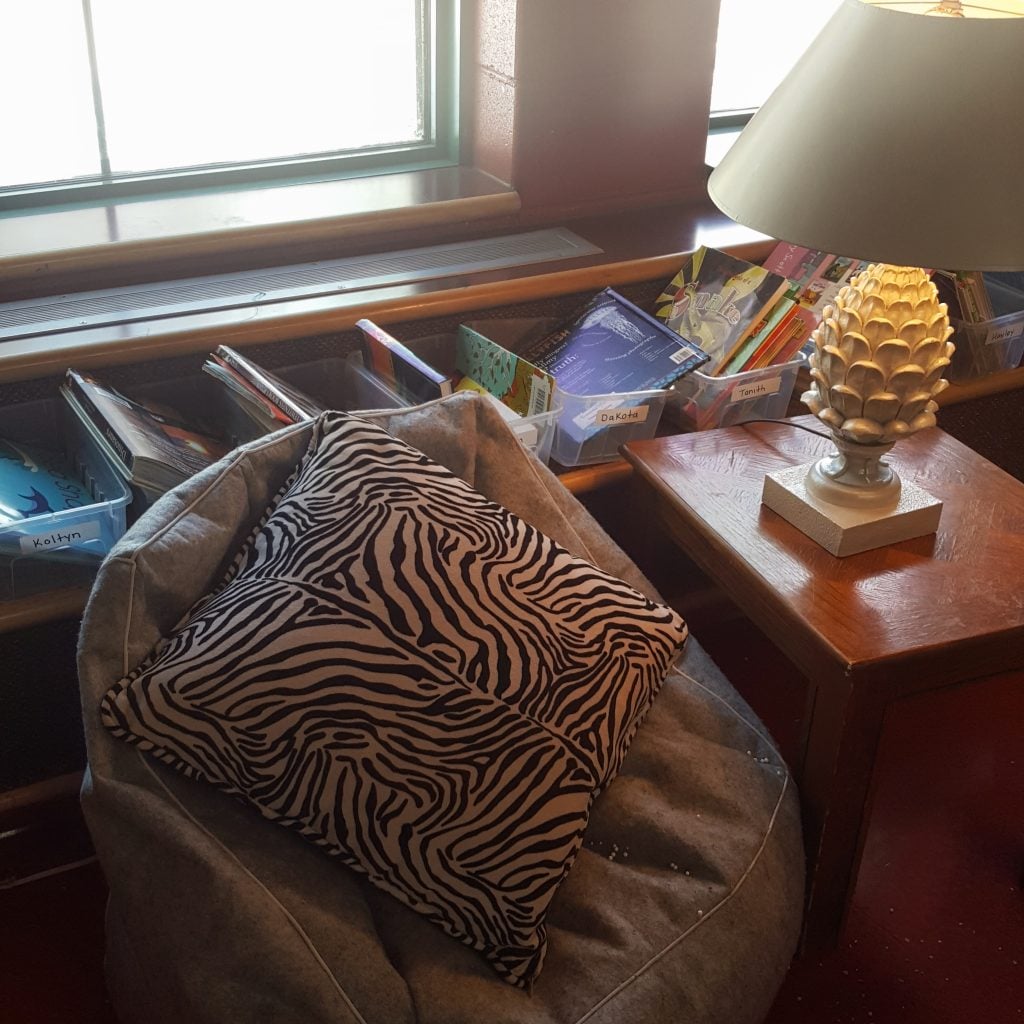
Bean bags are popular but can be problematic during lunch or snack time
Technical Challenges with Flexible Seating
“Keeping the stability balls in place was a huge challenge!” laments Ashley. When the kids are actually sitting on the balls there is no problem. However, when they are not in use it was hard to keep them from rolling around the classroom. Ashley discovered that large, round tubs she had around her classroom worked well to keep the balls in place when they weren’t in use.
There are also challenges with how the students use the new seating. “It’s hard at lunch and snack time. Students argue over what seats they want to sit in and because of food mess we have had to disallow fabric seats (bean bags and pillows) during meal times.” Ashley has tried several strategies, including assigning seats during meal times and creating a meal time seat rotation.
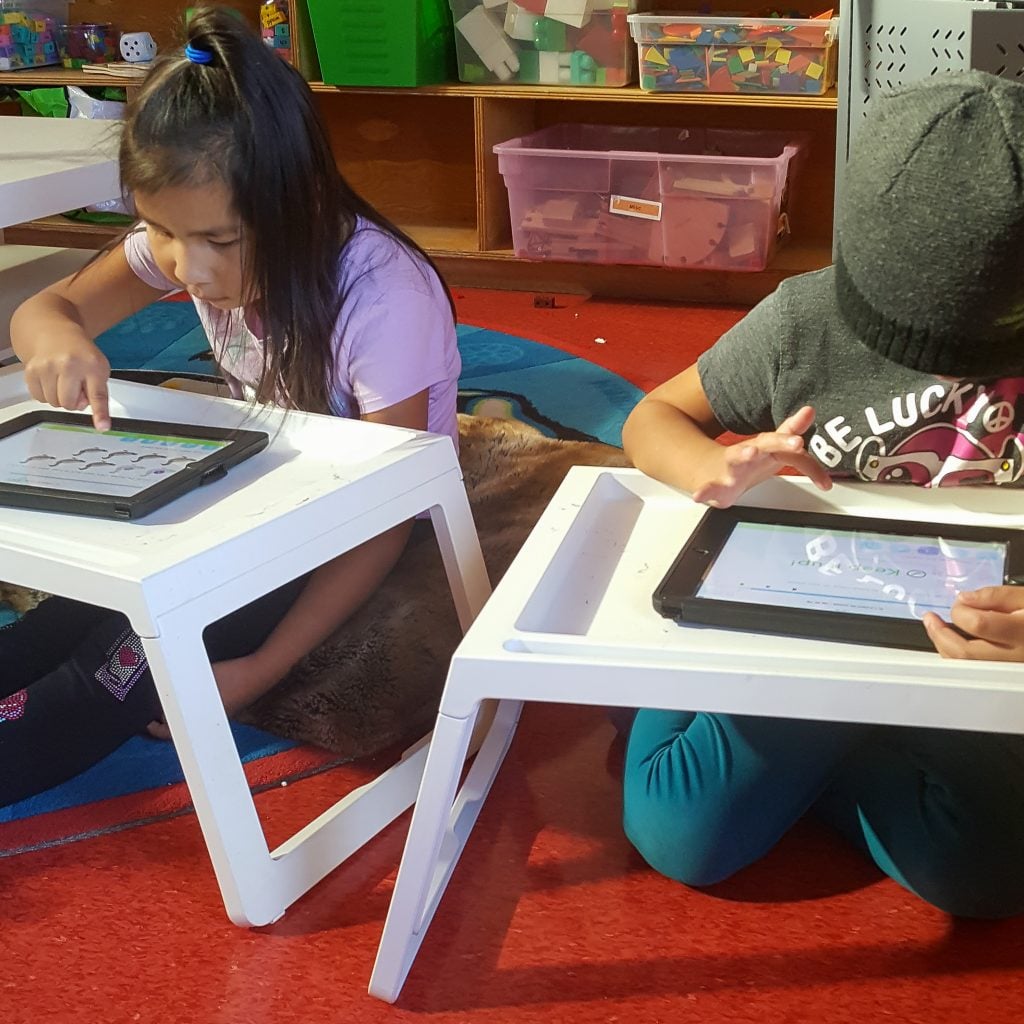
Students are figuring out which type of seating helps them work best
Students Are Liking It!
“The kids’ favourite type of seat is the stability balls. I’m looking into getting more!” says Ashley. She has also purchased a number of lamps and chooses to turn off the fluorescent classroom lights to create a calmer atmosphere. Ashley is always looking for more seating options. She is eager to see the progress in her students as they become more aware of which seat option they work best in and why.


